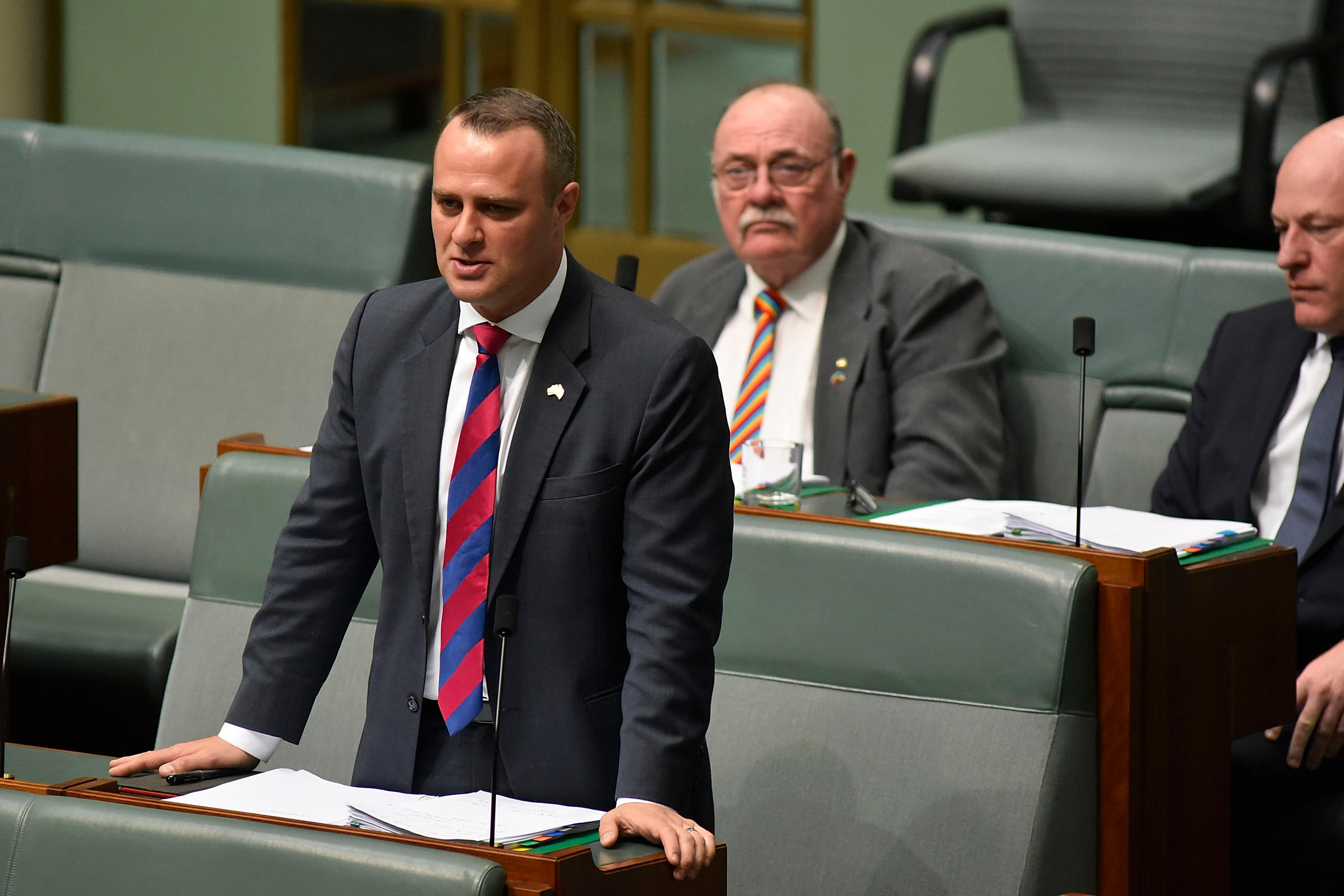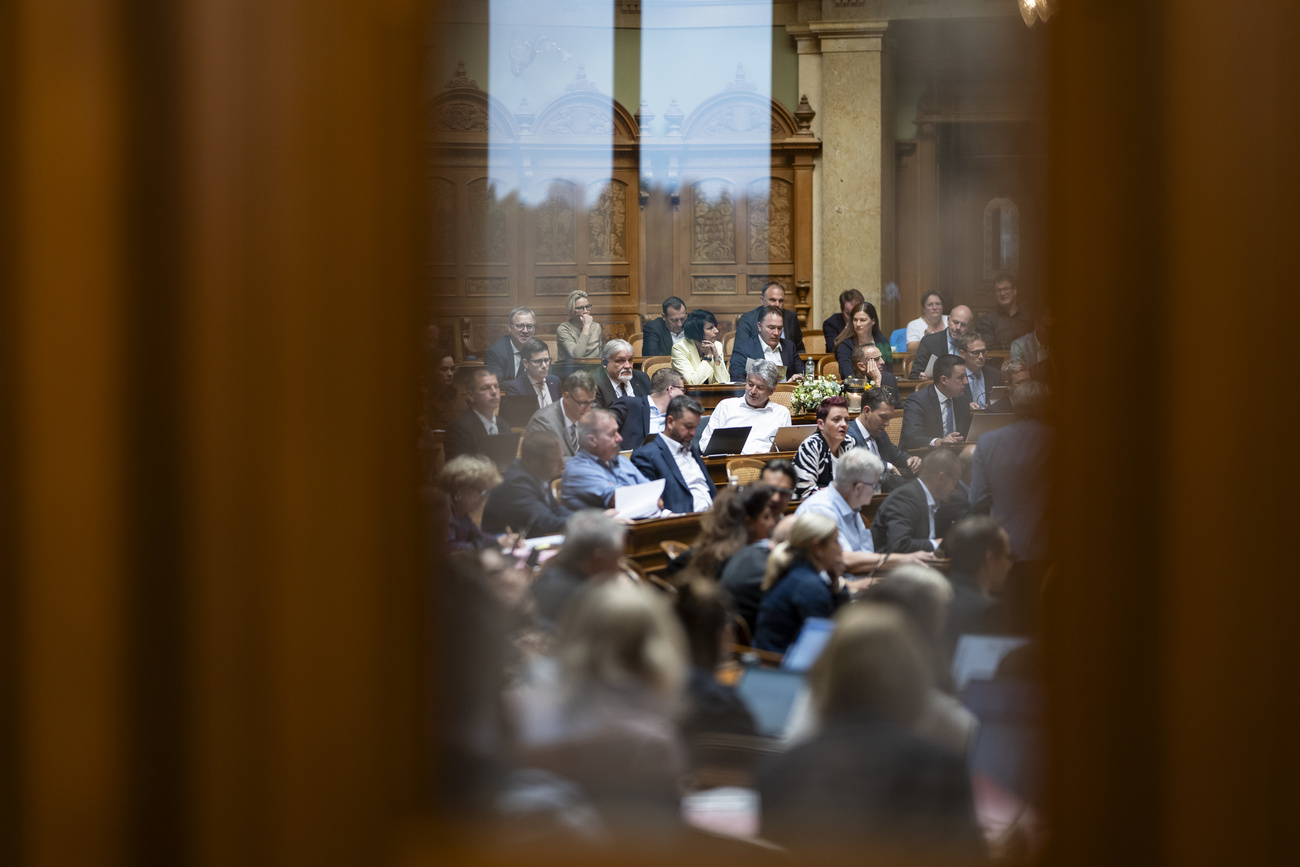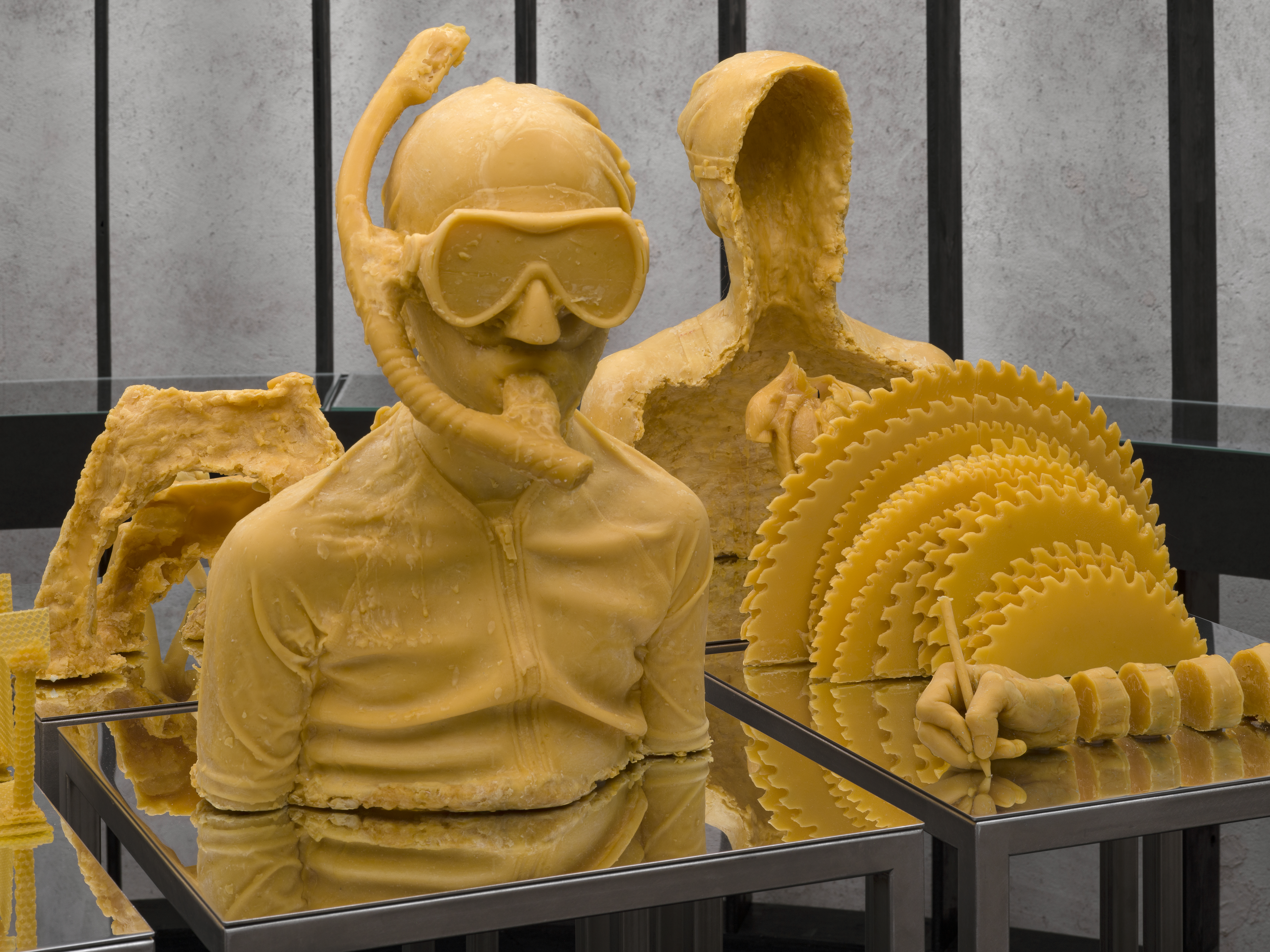
A piece of Swiss democracy down under

After years of dispute, the Australian parliament recently passed the same-sex marriage bill. But it was the Australian people themselves who paved the way by voting ‘yes’ for the first time in a popular vote in 40 years. This has also whetted the appetite for more reforms, which in the past have been rejected – due to a democracy model imported from Switzerland.
This text is part of #DearDemocracy external link, a platform on direct democracy issues, by swissinfo.ch.
In 1913, Canberra was founded as the capital in this region which expands over 2,300 square kilometres. This is where the federal government of the country of 25 million people has its seat and where the two houses of the national parliament conduct their sessions.
Recently, the House of Representatives witnessed history being made. Tim Wilson was standing at the speaker’s desk, but the representative of the ruling liberal party did not talk about same-sex marriages, as listed on the agenda.
Instead, Wilson dropped a bomb. “Ryan Patrick Bolger, do you want to marry me?” Wilson looked at the audience, where his partner Ryan was sitting. Ryan did not hesitate for a second. He said ‘Yes’ and with that, accepted possibly the most political marriage proposal ever made.
Parliamentarians acknowledged the surprising move with raging applause; many were even moved to tears.
“Thank you, dear citizens, for this most beautiful Christmas present,” said a representative of the opposition Labour Party, referring to the recent referendum on same-sex marriage which was accepted by the majority of the people.
Eighty percent of Australian voters turned out for the referendum, which was done by post and was only consultative. Some 61.6% voted in favour, giving a clear mandate to the liberal move.
Over the past few years, representatives of various parties have repeatedly tried to modernise the Australian Marriage Act. These attempts have always failed because of the various hurdles inherent to Australia’s democracy. The country’s governmental system may be interesting, but it’s also complex.
A conglomerate of democracies

More
Around the world in 200 days for people power
“The system was hugely inspired by the US, Great Britain and Switzerland,” observes political scientist Ron Levy, who lectures at the Australian National University in Canberra. In December this year, Levy participated in the event “Direct Democracy in Australia and SwitzerlandExternal link”, co-organised by the Swiss embassy in Canberra.
When Australia’s founding fathers came together for a constitutional convention in Sydney in 1891, their decision to inaugurate two houses was inspired by the US. They also looked at the parliamentary system of the British Westminster model, where the Queen of England still reigns as sovereign over her people.
The third important inspiration came from Switzerland. The Australians copied the mandatory referendum stipulation for constitutional changes word by word. An amendment to the constitution needs a majority of those voting nationwide, as well as separate majorities in a majority of states, which means it has to secure a double majority.
Kind words about Switzerland
But how did the Swiss system of a double majority get to the other side of the globe? According to Hans-Urs Wili, long-time leader of the Division for Political Rights at the Swiss Federal Chancellery in Bern, it was driven by a certain Henry A. Tardent.
Tardent emigrated to Australia in the 1880s. More precisely, he moved to the former British colony of Queensland. Wili followed Tardent’s tracks, which led him to Tardent’s place of birth, the village of Ormont-Dessous in Western Switzerland, where he dug out some fascinating facts about his life story.
Tardent’s beginnings in the New World were initially unspectacular, starting off as a simple farmer. He worked his way up to become a language teacher and was later promoted to become the secretary of the Labour Party in Queensland.
At this point, Tardent took a crucial step. The constitutional convention in Sydney asked him to translate and outline the Swiss Federal Constitution.
Tardent did as he was asked, and he obviously did extremely well. The Australian founding fathers not only adopted the mandatory referendum for constitutional changes, they also took on the double majority rule, which acts as a compensatory mechanism between the various and differently-sized states.
Another Swiss who played a critical role in the process was Heinrich Spoendlin. He and Tardent talked about their home country with so much affection that the Australians even copied whole paragraphs of Swiss norms. And Spoendlin was not just anybody – he was a direct descendant of Swiss reformer Huldrych Zwingli.
Stumbling stones
Since its formation, Australia has sent its citizens to the ballot box 44 times to vote on constitutional amendments. And as voting in Australia is mandatory, they had no choice: those who don’t have a good reason for not showing up at the polling station on vote day are fined AUD40 (about CHF30).But still, the sixth biggest country in the world is having a tough time modernising its constitution. Only about eight of the 44 votes were carried and achieved the necessary double majority (see box).
Since 1901, just eight amendments to the Constitution have been carried
1906: Reform of the voting system
1910: Financial compensation between states
1928: Debt brake
1946: Giving the Commonwealth power to legislate on social services
1967: Abolition of discrimination against Aborigines
1977: Senate Casual Vacancies
1977: Allowing electors in the Australian territories (ACT/Canberra, Northern Territories) as well as in the states to vote in constitutional referendums
1977: Retirement of judges
However, the bill on same-sex marriages is not a constitutional amendment, but a legislative reform. Political scientist Ron Levy explains: “Following the defeat of so many proposals in the past 40 years, Australia’s prime minister Malcolm Turnbull decided to hold a referendum on the new Marriage Act.”
Popular votes on laws are only consultative, according to Levy, and are not binding. “Politicians see such referenda as a good way out of a political cul-de-sac,” Levy explains. And in the case of gay marriage, it was a political calculation that worked.
Ironically, it was the people within the ranks of the ruling centre-right coalition of the liberal and conservative parties who blocked the introduction of gay marriage. “The referendum has now finally undone the knot,” Levy says.
Hopes for further reforms
“Hopefully, we’ll be able to use these dynamics for other reforms that are overdue,” says Sarah Heathcote, vice director of the Centre for International and Public law at the Australian National University.
Heathcote, who also took part in the direct democracy event in Canberra, hopes that the acceptance of the Aborigines will finally be laid down in the Constitution. There are now only about half a million Aborigines, the indigenous people who inhabited the continent long before the Europeans arrived in 1770.
In order to achieve such an acceptance, the majority of the whole population as well as of Australia’s individual states would have to vote in favour.
The deeply rooted frustration of the 1999 failure to abolish the monarchy and introduce a republic is also still at play. Once again, it was the Swiss model of the double majority rule that blocked the move.
Prior to the vote, surveys indicated that the voting population as well as parliamentarians were in favour of abolishing the monarchy.
“Now this reform will be off the agenda for generations,” says Ron Levy. In Australia, the people are not the “sovereign of the country” like in Switzerland. The sovereign is still the Queen of England, who lives far away in London’s Buckingham Palace.
Indirectly, it is down to the Swiss that Queen Elizabeth II still watches over the land down under. Whether she has thanked the Swiss for the favour or not, we may never know.
Translated from German by Billi Bierling, swissinfo.ch

In compliance with the JTI standards
More: SWI swissinfo.ch certified by the Journalism Trust Initiative



























You can find an overview of ongoing debates with our journalists here . Please join us!
If you want to start a conversation about a topic raised in this article or want to report factual errors, email us at english@swissinfo.ch.